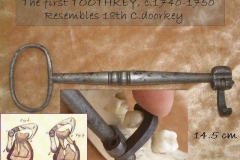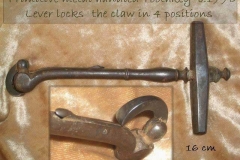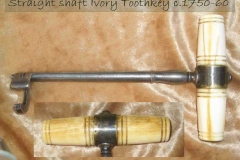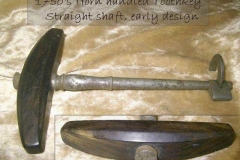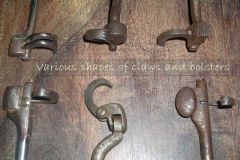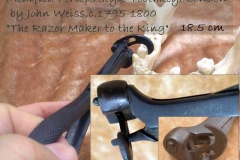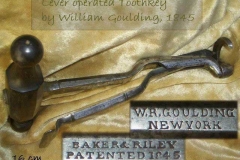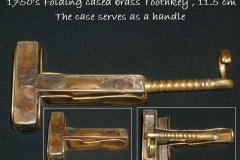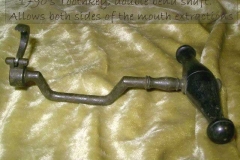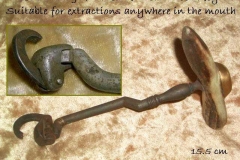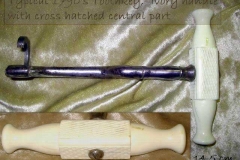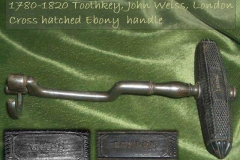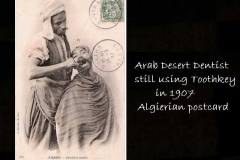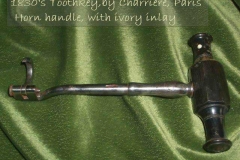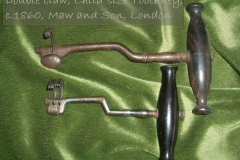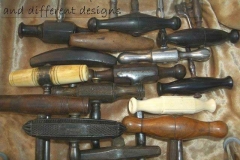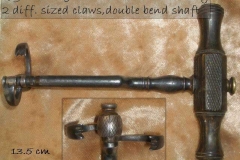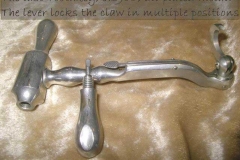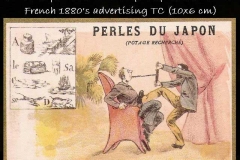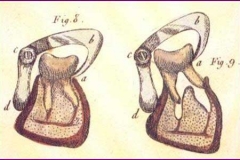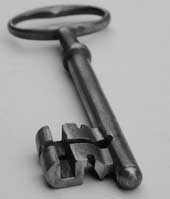
Antique dental extractors fall into 6 groups- forceps, levers, elevators, pelicans, toothkeys, screws.
Around 1730 someone noticed, that it is possible to extract a tooth using a simple door key. The key was modified and Antique dental Toothkey was born.
First examples were mentioned in 1742 by the important British physician Alexander Monro ( 1697 – 1767) and looked exactly like door keys of the era: a large ring handle and a straight shaft with a hinged claw.
The tooth drawer used to place the bolster against the soft gum and secure the claw over the tooth crown . The key was then rapidly rotated as if unlocking the door.
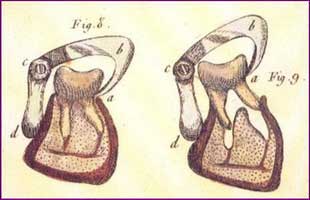 That way he tooth was dislocated and removed, often with a large portion of the jaw. Exactly because of the devices like Toothkey and Pelican, tooth extraction was widely considered a very dangerous and ocasionally lethal procedure. Nevertheless , by 1770 the toothkey became the most popular tooth pulling instrument and had may names: French key, German key, English key, Clef de Garengeot (named after french surgeon Rene-Jacques Garengeot 1688-1759).
That way he tooth was dislocated and removed, often with a large portion of the jaw. Exactly because of the devices like Toothkey and Pelican, tooth extraction was widely considered a very dangerous and ocasionally lethal procedure. Nevertheless , by 1770 the toothkey became the most popular tooth pulling instrument and had may names: French key, German key, English key, Clef de Garengeot (named after french surgeon Rene-Jacques Garengeot 1688-1759).
The Toothkey came in many sizes and designs- adult and children size, round and transverse handles, straight and curved shaft, single-double-triple claw, fixed or rotating claw.
Over the years the metal handles evolved into ivory, bone, MOP, ebony or simple wood handles.
Toothkey was still being used in the beginning of the 20th Century.
חולצי השיניים העתיקים מתחלקים למספר קבוצות : צבת, פליקאן, מפתח שן, מניף ובורג.
בערך בשנת 1730 היה מי ששם לב שניתן לעקור שן באמצעות מפתח רגיל למנעול תלייה. המפתח הרגיל עבר שינויים והתאמות- וכך נולד “מפתח שן”. הדגם הראשון הוזכר ב– 1742 על ידי מנתח בריטי חשוב אלכסנדר מונרו וצורתו כצורת מפתח עתיק – ידית בצורת טבעת גדולה המחוברת למוט שבקצהו וו הנע על גבי ציר.הוו חבק את השן ושולף השיניים היה מניף אותה הצידה בתנועה סיבובית מהירה, בדומה לפתיחת מנעול. לא פעם – יחד עם חלק מהלסת.
בדיוק בגלל מכשירים כמו מפתח שן ופליקאן עקירה נחשבה לפעולה מסוכנת ואף קטלנית. למרות כל הסיכונים – לקראת 1770 המפתח הפך לכלי העקירה הפופולארי ביותר ונשא שמות רבים: המפתח הצרפתי, המפתח הגרמני, המפתח האנגלי, Clef de Garengeot , על שמו של המנתח הצרפתי ( Rene-Jacques Garengeot (1688-1759.
המפתח יוצר בצורות וגדלים רבים – לילדים ומבוגרים, מוט ישר ומכופף, ידיות עגולות ורוחביות, בעלות וו יחיד- כפול- משולש, וו מקובע או בעל יכולת לשנות זווית. במהלך השנים הידיות הפכו מידיות ברזל פשוטות לידיות שנהב ,עצם, צדף, עץ יקר או עץ פשוט. מפתח שן שרד בשימוש לתוך תחילת המאה ה-20.
